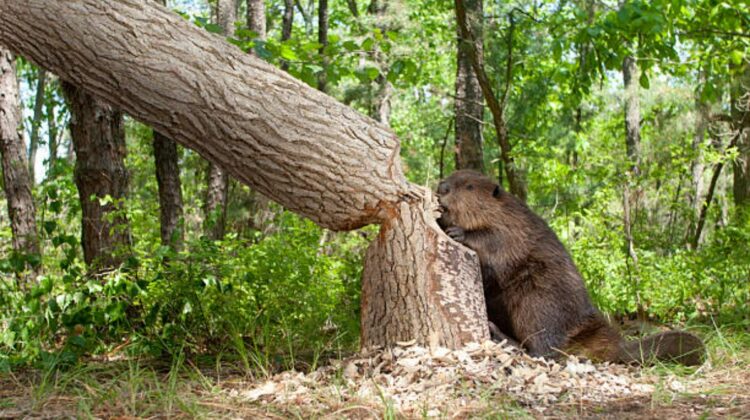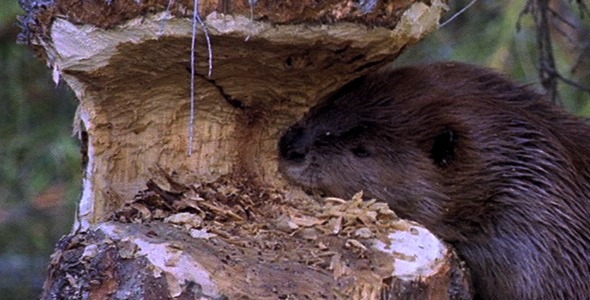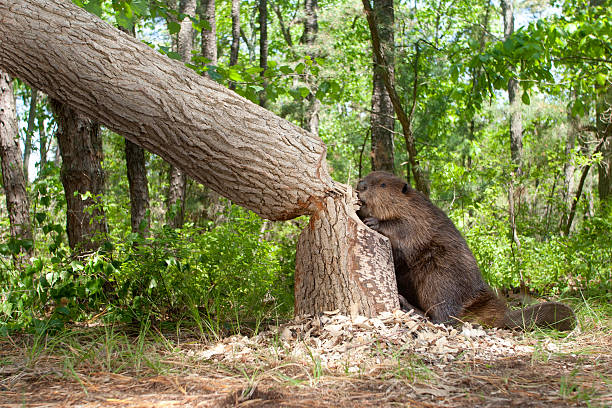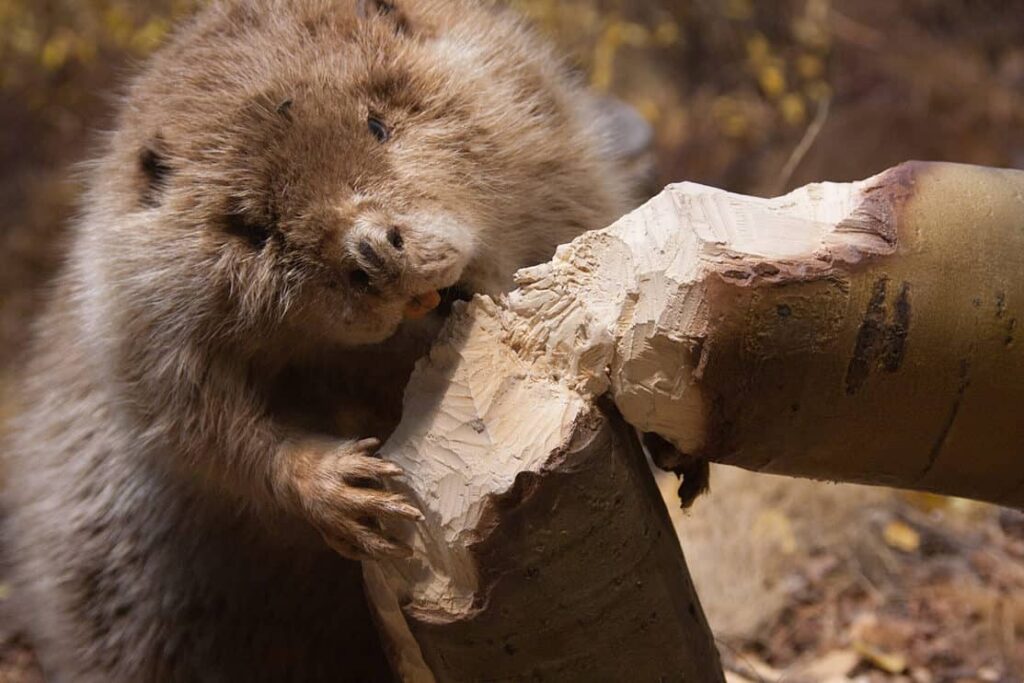
Beavers, nature’s industrious architects, have a unique and fascinating method of felling trees that showcases their engineering prowess. In their quest to build dams, create shelter, and secure their food supply, beavers employ a time-tested technique that leaves a distinct mark on the trees they fell.

This is how beavers fell a tree: They gnaw around it, biting out chips in a deep groove. The result is a distinctive point at the end of the stump or log that the beaver cut down.
Unlike other tree-felling methods where a saw or an axe may be used to create a clean, straight cut, beavers employ their powerful jaws and chisel-like teeth to carve out a circular path around the tree. This circular groove is a masterpiece of precision, showcasing the beaver’s skill at calculating the perfect angle to ensure a controlled fall.

The process begins when a beaver identifies a suitable tree for felling. Beavers generally favor softwoods like aspen, willow, and birch, as these trees are easier to work with due to their softer wood. Once the target tree is selected, the beaver starts its meticulous task. Gnawing around the tree’s circumference allows the beaver to weaken the tree’s structural integrity effectively.
As the beaver chips away at the wood, it creates a groove that steadily deepens. The beaver’s specialized teeth, continuously growing throughout their lives, are sharp and sturdy, making them well-suited for this challenging task. The unique combination of strength, precision, and endurance enables beavers to accomplish this feat, which would be a considerable challenge for other animals or tools.

The distinctive point left at the end of the stump or log after a beaver’s work is complete is a testament to their expertise. This design not only signifies the tree’s fall but also serves a functional purpose in a beaver’s environment. The pointed end of the stump allows the beaver to easily transport and maneuver the felled tree as they construct their dams and lodges.
Beavers’ ability to fell trees is an essential part of their ecological role. By creating wetland habitats through dam-building and reshaping landscapes, beavers significantly influence their surrounding environments. These altered ecosystems benefit a variety of other wildlife species, as well as contribute to water retention, erosion control, and enhanced biodiversity.

Understanding how beavers fell trees sheds light on the intricacies of nature’s engineers and their vital role in shaping ecosystems. It is a testament to the remarkable adaptability and resourcefulness of these creatures, as they continue to thrive and leave their mark on the landscapes they call home.

Leave a Reply